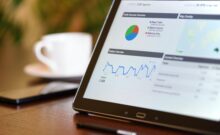Data is everywhere, and the market for data analytics is growing and evolving. Companies use data for all kinds of purposes, from researching internet traffic to analyzing actual traffic patterns during rush hour. Here are five common uses of data analytics.
Marketing
Marketing is about reading and knowing your audience, so gathering data on them will empower you to market more effectively. Knowing your target demographic, for example, allows you to create ads that speak to those demographic groups.
Decision Making
Collecting data in real time enables you to constantly analyze the needs of your customers and make the best decisions for them at any given time. In addition, knowing aggregate information about your customers that they might not give you on their own allows you to understand their needs in more dynamic ways and give you an edge over competitors who might not be engaging in data analytics. Consumers are more likely to purchase products that are tailored to their wants and needs, and the decision of what product to deliver is made much easier with analytics.
Risk Management and Detection
Of particular importance in the world of insurance, risk management is the act of analyzing how likely a person is to put a claim on their property. Data analytics is used to determine this by looking at factors such as the age and location of the property and any previous insurance claims that have been made on the estate.
Security
Data analytics assists with security both on the internet and in communities. Some cities use geographical and archival data to determine where and when crimes might occur, and what types, leading to better allocation of police and other community resources. Data is useful in the world of cybersecurity as well, helping to assess the risk of malicious attacks such as phishing and Trojan worms. Knowing your cybersecurity risk allows companies and home computer users to more efficiently invest in software to prevent their networks against such attacks.
City Planning
Analyzing data from traffic patterns is extremely useful for planning livable urban environments, as it helps decide where to build roads as well as where to place commercial buildings, residential neighborhoods and industrial complexes. Data for city planning might also include environmental data such as the location of water sources.
Data is ubiquitous and the ability to use it for a useful purpose seems to have no bounds. These are just five common uses of data analytics among many.





